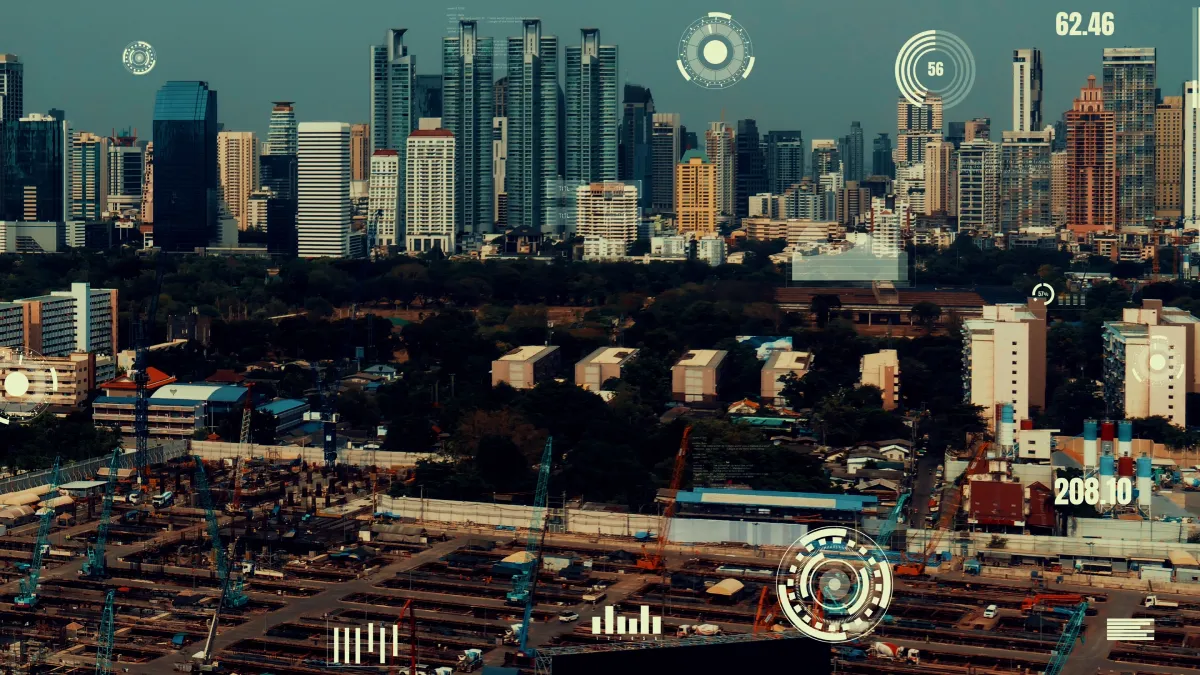How Smart Cities Are Transforming the Construction Industry
Cities around the sector are evolving at a brilliant pace. With speedy urbanisation and population boom, traditional infrastructure is no longer sufficient to satisfy modern-day demands. This is where the concept of clever cities comes into play. By mixing advanced technology, sustainable practices, and forward-thinking layout, smart towns are reshaping the way we stay, art work, and have interaction with our surroundings. Naturally, this modification has placed the improvement employer at the main edge of innovation, worrying new techniques, substances, and processes to building for the destiny.
The Concept of Smart Cities
At their core, smart cities are designed to apply data, technology, and connectivity to enhance the excellence of life and decorate sustainability. These towns combine synthetic intelligence (AI), the Internet of Things (IoT), and cloud-based systems to streamline regular competencies such as transportation, strength use, and waste control. Unlike traditional towns that regularly face demanding situations like site visitors congestion, pollutants, and poor aid allocation, smart towns rely upon smart planning and digital technology to address these troubles head-on.
Construction plays a vital position right here, because the physical structures and infrastructure must be designed to support these smart systems. Whether it’s installing sensors on highways, building strength-efficient homes, or developing inexperienced housing initiatives, the development enterprise is essentially laying the inspiration for tomorrow’s urban living.
Shifts in Construction Practices
The rise of clever towns has compelled production companies to rethink how they approach initiatives. Traditional techniques, while reliable within the beyond, can’t keep up with the pace and scale required today. The adoption of digital-driven practices is now essential. For instance, Building Information Modelling (BIM) has grown to be a popular method, permitting engineers, architects, and contractors to collaborate truly and identify problems earlier so that the floor is not even damaged.
Additionally, the demand for FF&E Construction has grown substantially. Furniture, furniture, and systems are no longer afterthoughts, a necessary part of clever town-making plans, designed to enhance each functionality and aesthetics. Smart lighting systems, electricity-green appliances, and modular fixtures must be cautiously selected and integrated, making construction a long way extra state-of-the-art than in the past.
Sustainability on the Core
One of the defining functions of smart towns is their cognisance of sustainability. Buildings are not judged totally on cost and look, but additionally environmental footprint. Green construction practices have emerged as valuable, with builders using renewable energy, eco-friendly substances, and modern designs to lessen lengthy-time period environmental impact.
For instance, production companies are more and more turning to superior materials together with PPGI Steel Coil, which affords both electricity and durability at the same time as supporting strength performance. This sort of fabric not only extends the lifespan of systems but also reduces renovation prices, aligning perfectly with the lengthy-term imaginative and prescient of sustainable city development.
Smart creation also emphasises renewable energy integration.Rooftop solar panels, wind turbines, and energy-green HVAC systems are actually favored functions in new projects. These factors collectively goal to decrease carbon emissions, hold resources, and promote more healthy residing environments.
Smart Infrastructure and Urban Mobility
Another transformative component of clever towns is the manner infrastructure is being redesigned to manual new modes of urban mobility. Roads, bridges, and public transportation structures are now not definitely physical systems; they’re related networks that engage with real-time records.
For example, clever visitor lighting adjusts robotically to reduce congestion, even as wise public delivery systems permit commuters to plan their trips with accuracy and comfort.
Construction groups need to adapt via growing infrastructure that accommodates no longer only electric powered vehicles but additionally virtual structures. From embedding sensors in roadways to constructing charging stations for electric powered vehicles, the industry is gambling an instrumental position in shaping smarter, more linked towns.
Challenges in Building Smart Cities
Despite the promise of clever cities, the path to building them isn’t without hurdles.
High upfront prices are one of the greatest obstacles. Integrating advanced technology into construction requires great investment, and no longer all areas have the financial capacity to assist such projects.Another project lies in merging the new era with conventional infrastructure. Older buildings and road structures often need extensive enhancements before they can emerge as “smart.” Additionally, information protection and privacy issues must be carefully addressed as smart systems depend heavily on interconnected virtual networks.
The production body of workers additionally faces a steep mastering curve. Upskilling people to deal with present-day gear, including drones, robotics, and AI-powered planning software, is vital for preserving pace with the needs of smart metropolis tasks.
The Future of Construction in Smart Cities
Looking in advance, the construction industry will continue to play a pivotal role in the boom of smart towns. Automation, robotics, and synthetic intelligence will become even greater deeply embedded in production strategies, helping to lessen costs, improve performance, and decrease risks. Prefabricated and modular construction strategies will benefit reputation, permitting projects to be completed quickly and with much less waste.
Sustainability will stay critical, with round financial system principles guiding material use and waste management. Governments, production companies, and era agencies will collaborate extra carefully than ever before to make certain that clever towns aren’t just technologically superior but also inclusive, resilient, and destiny-ready.
Conclusion
The upward thrust of smart cities marks a new era within the creation enterprise. No longer restricted to building roads and skyscrapers, production is now tasked with shaping smart, sustainable, and connected urban environments. From adopting new substances to integrating superior technology, each step of the development technique is being redefined.
As demanding situations are triumphed over and innovation continues, smart cities will not simplest remodel the way we live but also encourage the development enterprise to push beyond traditional limits. The future of city living is sensible, and production will usually be at the heart of that transformation.

Leave a Reply